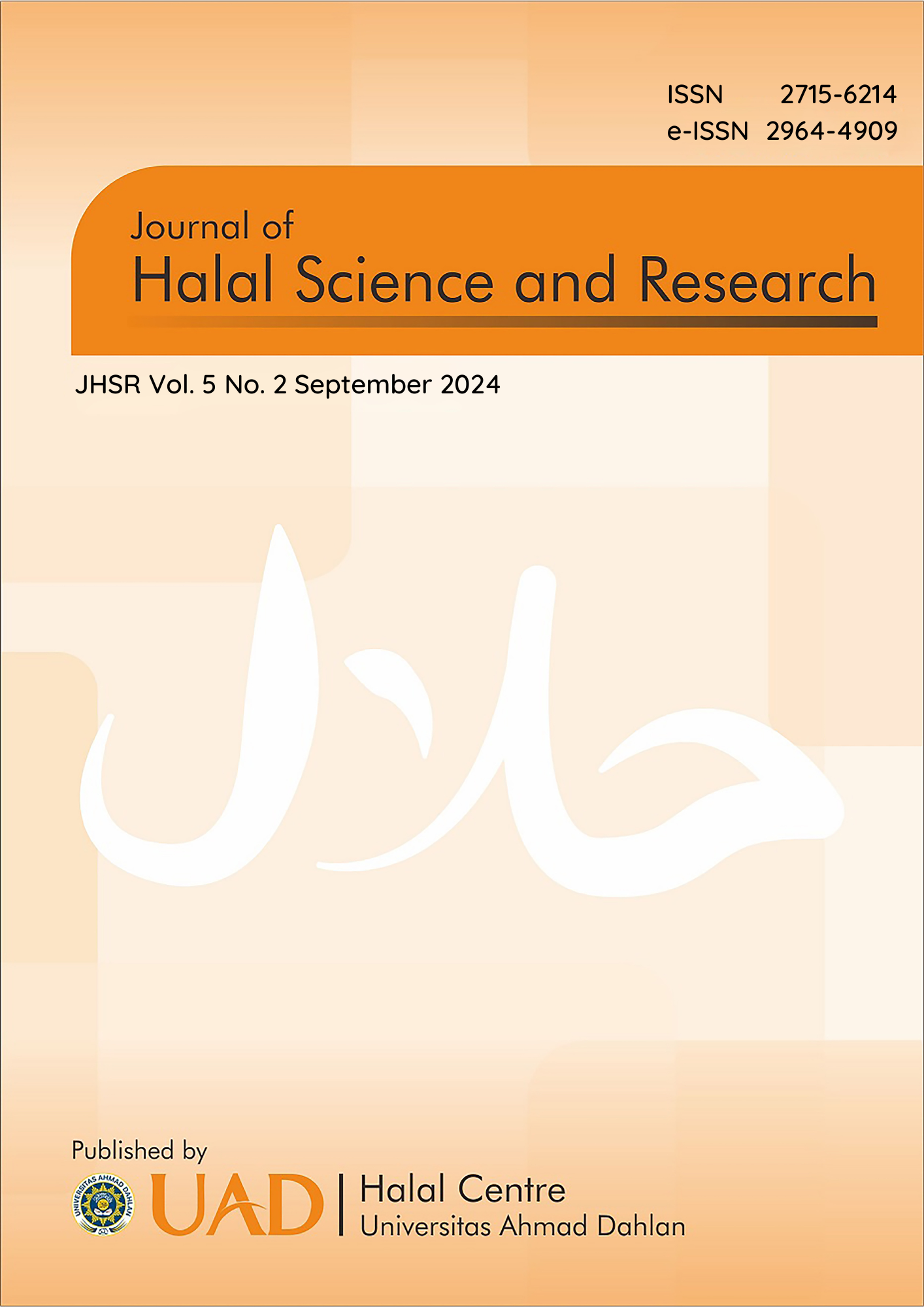Prediction of biomarker peak of infrared spectra between pork fat and chicken meat fat using fourier transform infrared spectroscopy technique and clotter plot method
DOI:
https://doi.org/10.12928/jhsr.v5i2.10820Abstract
The increasingly widespread contamination of chicken meat by pork requires a method to identify the presence of these contaminants quickly and cheaply. Apart from analyzing the spectrum of various pure animal fats, this research also aims to vary the concentration of pork fat and chicken fat to know the FTIR peak spectrum, which will change with changes in concentration. The presence of spectral peaks that change can be identified due to changes in pork fat concentration, which also shows a typical peak spectrum position in pork fat. Variations in the concentration of pork fat contaminants in chicken fat consist of the ratio of the mixture of pork fat (PF) and chicken fat (CF), namely 90:10 (PC1), 80:20 (PC2), 70:30 (PC3), 60:40 (PC4), 50:50 (PC5), 40:60 (PC6), 30:70 (PC7), 20:80 (PC8), and 10:90 (PC9). A scatter plot, a graph usually used to see the relationship pattern between 2 variables, is employed in this research to visualize the changes in spectral peaks with varying concentrations of pork fat in chicken fat. The data scale must be an interval and ratio scale to use a scatter plot. Biomarker wavelengths were identified from the spectra of four animal fats and palm oil at positions 2948.9 and 3007 cm−1, separated by four animal fats and palm oil at a certain distance, thus indicating that these wavelengths could be used to identify non-halal samples.
Keywords: Chicken, Clotter plot, Fat, Infrared, Meat, Pork, Spectra
Downloads
Published
Issue
Section
License
Copyright (c) 2024 Universitas Ahmad Dahlan

This work is licensed under a Creative Commons Attribution-NonCommercial-ShareAlike 4.0 International License.
Authors who publish with JHSR (Journal of Halal Science and Research) agree to the following terms:
1. Authors retain the copyright and grant Universitas Ahmad Dahlan right of first publication with the work simultaneously licensed under a Creative Commons Attribution-NonCommercial-ShareAlike 4.0 License (CC BY-NC-SA 4.0) that allows others to share (copy and redistribute the material in any medium or format) and adapt (remix, transform, and build upon the material) the work for any purpose, even commercially with an acknowledgement of the work's authorship and initial publication in Universitas Ahmad Dahlan.
2. Authors are able to enter into separate, additional contractual arrangements for the non-exclusive distribution of the journal's published version of the work (e.g., post it to an institutional repository or publish it in a book), with an acknowledgement of its initial publication in Universitas Ahmad Dahlan.
3. Authors are permitted and encouraged to post their work online (e.g., in institutional repositories or on their website) prior to and during the submission process, as it can lead to productive exchanges, as well as earlier and greater citation of published work (See The Effect of Open Access).

This work is licensed under a Creative Commons Attribution-NonCommercial-ShareAlike 4.0 International License.




